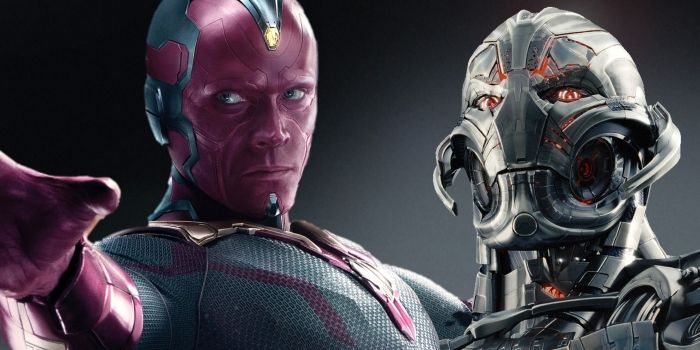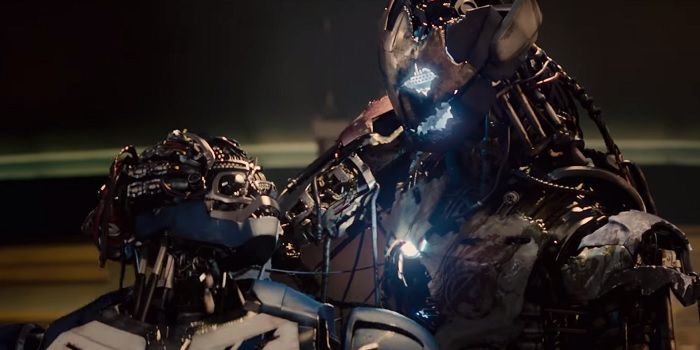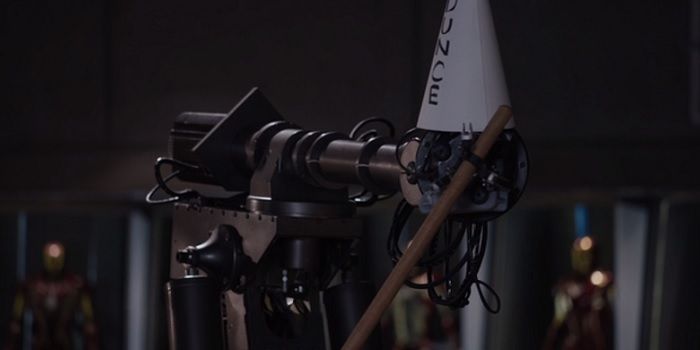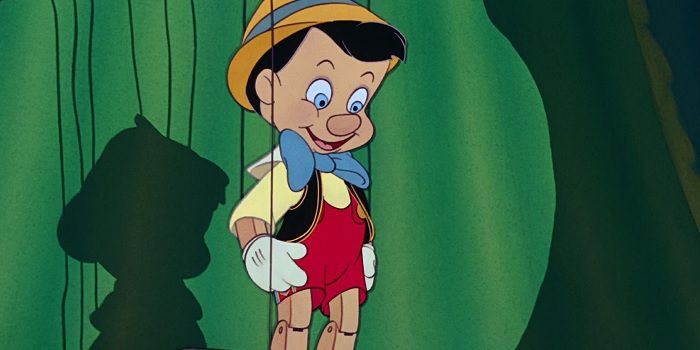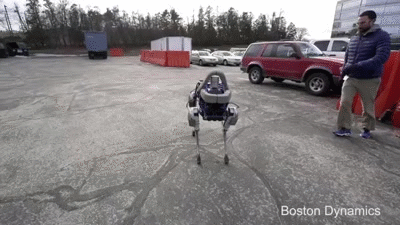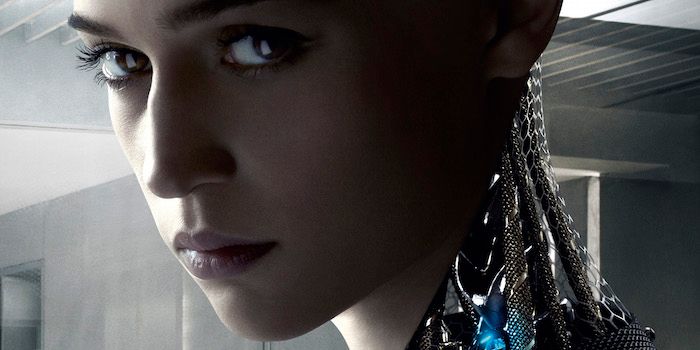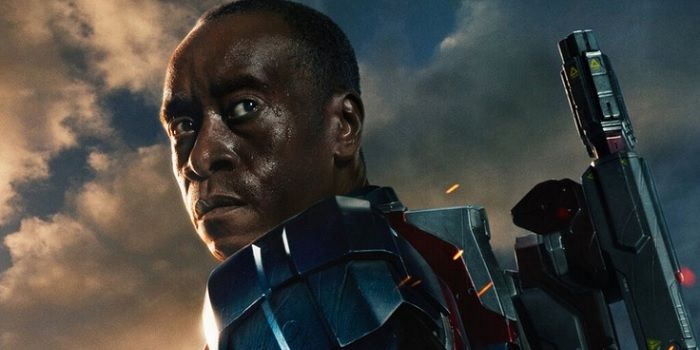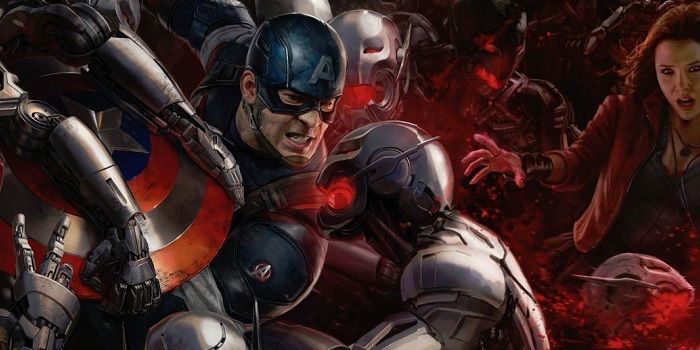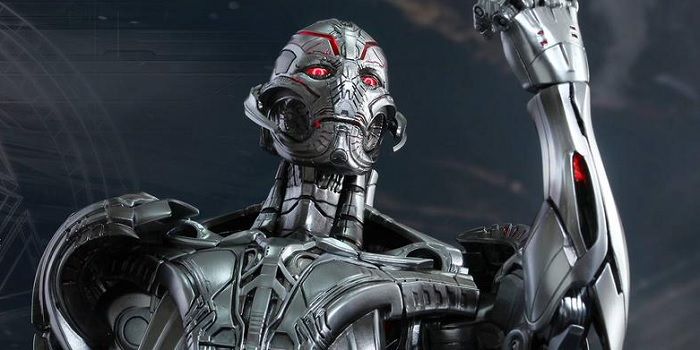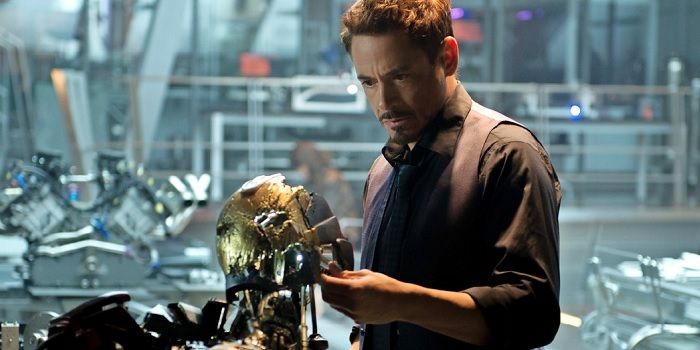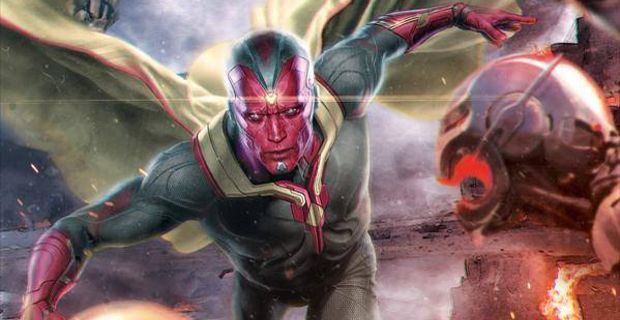Avengers: Age of Ultron is soft science fiction and happy to be so. Between the god of thunder flying around in a cape, Scarlet Witch's magical mind control and telekinesis powers, and the giant green rage monster who can only be soothed by the touch of a beautiful woman, this is a fun summer action blockbuster from beginning to end.
With that said, Marvel has not shied away from using fun summer action blockbusters as a means to explore ethical questions that society is already dealing with - or those that it might have to face in the future. Directors Anthony and Joe Russo have said that during the development of Captain America: The Winter Soldier they heard about President Barack Obama's "kill list" of known terrorists, and it highlighted for them just how morally grey issues of security and freedom had become.
"Cap is a representative of the Greatest Generation. The war, the conflict they were involved in, was very black and white,'" Joe Russo explained. "Now he’s in a very subversive, cynical world, and he’s a great mirror for us."
Avengers: Age of Ultron continues the themes of Captain America: The Winter Soldier, as the Avengers attempt to step into the role previously filled by S.H.I.E.L.D. and, as Tony Stark phrases it, "Put a suit of armor around the world." In the action-packed opening sequence the Avengers launch an attack on Baron von Strucker's castle in Sokovia, while the Iron Legion - a fleet of automated humanoid robots created by Tony Stark - attempts to corral the frightened residents of the city.
According to documentaries like Motherboard's recent thought-provoking piece "The Dawn of Killer Robots," Tony Stark's Iron Legion, his rogue offspring Ultron and the highly sophisticated android called The Vision could represent the future of combat. But how close are we to creating true artificial intelligence? Screen Rant sat down with an expert to find out.
-
Artificial Intelligence vs. Artificial Consciousness
How close are we to artificial intelligence? Actually, we're already there and we have been for a while. Artificial intelligence exists all round us, from the enemy soldiers in the latest Call of Duty story campaign to Apple's friendly iOS personal assistant Siri. What Ultron and the Vision represent is artificial consciousness, which is infinitely harder to achieve and thus far only exists in works of science fiction.
"It's not even whether something's alive or not that endows it with special status, it's whether it's conscious," explains Dr. Simon Stringer, director of the Oxford Centre for Theoretical Neuroscience and Artificial Intelligence at Oxford University's Department of Experimental Psychology. Both plants and lab rats are alive, for example, but lab rats are protected by ethical legislation like the UK's Animals (Scientific Procedures) Act 1986, whereas plants are not. After all, a lab rat has consciousness (however simple) that a plant does not possess.
In order to create true artificial consciousness we first need a blueprint, and the best possible blueprint for the technology resides inside our own skulls. The team of theoreticians at Stringer's laboratory are currently mapping the architecture and function of various areas of the brain - vision, spatial processing, motor function, language and consciousness - and creating computer models based on that architecture.
This is part of an overall goal to "replicate the ability of the brain to make sense of the world," which is made difficult by the complexity of the brain and our current limited understanding of how it works. Even the most sophisticated robots, for example, can't actually see the world around them in the same way that primates do.
"If you showed them a higgledy-piggledy pile of machine parts they couldn't differentiate the different parts, so they can't reach in and pick up particular parts and handle them," Stringer says, using a classic example to demonstrate what's known as the feature binding problem. It's one thing to look at a pile of machine parts, and quite another to understand what you're seeing.
Or, to use an example plucked straight from the Marvel movie canon, think back to Dum-E dousing Tony Stark with a fire extinguisher in Iron Man. Tony gives the hand robot strict instructions to only spray him if there's a fire, but poor Dum-E has no real understanding of what a fire is. It's probably just as well that Tony entrusted the task of rewiring his chest piece to Pepper Potts instead of his dim-witted robot assistant.
-
There Are No Strings On Me
Humanity's obsession with creating machines that seem alive long predates our ability to create anything approaching that reality. Ultron's sing-song reference to "There Are No Strings On Me" from Disney's Pinocchio was a focal point of the very first trailer for Avengers: Age of Ultron, and old-fashioned creations like puppets and automata could very well be viewed as mankind's first steps towards creating the lifelike movements seen in the robots that we have today.
"I think people were completely intrigued by the idea of a machine that was made lifelike," Stringer says, referring to clockwork automata that could act out simple scenes on a loop. "Of course, we didn't have computers back then so you couldn't make them very intelligent, but nonetheless they were works of art and intriguing mechanical devices."
It certainly lends credence to the theory that artificial consciousness is the next step in human evolution. It seems like humans have been trying to create it since before we even knew what we were trying to create.
Looking at the kind of advanced robots being funded at companies like the Google-owned Boston Dynamics, it's easy to believe that robots like Ultron might be just around the corner. Despite creating a convincing illusion of life, however, these robots lack even the basic consciousness of the average lab rat, and until we have a better understanding of the architecture of the brain and how to replicate it they will remain little more than highly advanced automata.
There's something undeniably cool about seeing Boston Dynamics' anthropomorphic robot Spot stagger and then right itself after being kicked, which is why engineering projects such as this attract so much funding from companies like Google and agencies like DARPA. Everyone wants to take the short cut and jump straight into walking, talking robot servants, but without the right software their efficacy will always be limited.
"I listen to engineers all the time talking about their conscious machines, their conscious creations, and at the moment it's all baloney," Stringer asserts. Trying to create artificial consciousness by building practical robots right now, he says, is like trying to reach the moon by adding rungs to a stepladder instead of investing in rocket science.
_____________________________________
NEXT PAGE: Creating the Mad Robot
_____________________________________
-
You Want To Protect The World...
There's an obvious advantage to sending a robot to do a highly dangerous job like bomb disposal or testing for chemical agents - there's no funeral or grieving relatives if a bunch of wires, metal and plastic gets blown up. The drones and robots being used by the world's military forces right now are remote controlled devices, with humans monitoring and guiding them, but advances in artificial research are bringing us ever closer to autonomous weapons.
Coalitions like the Campaign to Stop Killer Robots are already actively opposing the practice of using machines to kill humans, and the idea of a robot that could assess a situation and choose to use lethal force of its own accord is pretty terrifying.
An ongoing debate rages as to whether the use of drones is ethical, and it's a debate that could be found woven into the plot of Captain America: The Winter Soldier. The pro-drone camp argues that the machines are more precise and therefore less destructive than manned aircraft, while others dispute that claim and point out that it's of little comfort to the hundreds of civilians that have been killed in drone strikes.
As the Iron Legion demonstrates, a robot doesn't need to fully think and feel in the same way Ultron does in order to be dangerous. Stringer uses the example of a human stuck in a room with a pack of wild dogs, whose predator instincts make them deadly hunters. Even in terms of hardware, many of the military robots being developed at Boston Dynamics are inspired by the way that animals move around their environment.
There are other moral considerations that, while not particularly relevant just yet, could emerge as research into artificial intelligence continues. It seems self-evident that a machine with artificial consciousness - even if it only had the same level of intelligence as a dog or a small child - would be more effective in a combat situation than today's simple military robots. But how intelligent can a machine get before we have to start considering the ethics of using it as expendable cannon fodder?
"I think we'll hit deep philosophical problems before we get to human level [artificial] intelligence," Stringer muses. "If you could create something with the intelligence and behavior of a child, you're going to raise so many ethical issues... I can't begin to imagine how the world would adapt and react to that possibility."
-
The Mad Robot
Avengers: Age of Ultron director Joss Whedon has said that Ultron is "not a creature of logic - he's a robot who's genuinely disturbed," stating that the character was written to be "menacing and at the same time endearing and funny and strange and unexpected, and everything a robot never is." While the idea of a sarcastic, insane, illogical robot might seem strange, it's no less plausible than a cold, unfeeling, highly logical artificial consciousness.
One aspect of the work happening at Stringer's lab is creating models "from the bottom up, that are going from genes to proteins to synaptic dynamics to network level dynamics and cognition," in order to better understand and treat conditions like schizophrenia, autism, and bipolar disorder. In other words, it will theoretically be possible to program a robot to be mad, or depressed, or even to have certain personality traits.
Ultron himself seems to inherit his talent for sarcasm and wit from Tony Stark, something that Stringer says could very well happen once artificial intelligence becomes advanced enough: "If you're trying to replicate the human brain I wouldn't be at all surprised if you endowed the machines with all sorts of idiosyncrasies."
Before anyone starts building a bunker and grabbing their weapons in preparation for the machine revolt, it's worth noting that Stringer doesn't believe human-level artificial consciousness will exist within our lifetime. His goal, within the next couple of decades, is to help create an artificial consciousness that's slightly above the level of a mouse. It might seem simple, but that achievement could mark the beginning of a huge acceleration in research.
"Once we get the basic principles, then you'll find the Apples and the Microsofts and the Googles pouring billions into this technology," Stringer predicts. "Then you'll see an ignition point... We'll know what we're doing, and we'll know how to scale it up."
Perhaps it's a good thing that so many movies are currently addressing the future of artificial intelligence - in this year alone we've already had not only Avengers: Age of Ultron, but also Ex Machina and Chappie, with Terminator: Genisys still to come. With simple forms of artificial consciousness looking like a realistic possibility within the next couple of decades, Stringer believes that it could be a massive game-changer and that it's nearly impossible to accurately predict the effect it could have on society.
_________________________________________
Next: Age of Ultron Review
_________________________________________
"How is it going to affect the way we see all conscious systems, including ourselves? How does the legal system evolve to cope with this? How does religion evolve to cope with this? This is going to be worse than Darwin's theory of evolution, or discovering that the Earth goes round the sun."
Avengers: Age of Ultron is now in theaters worldwide.

